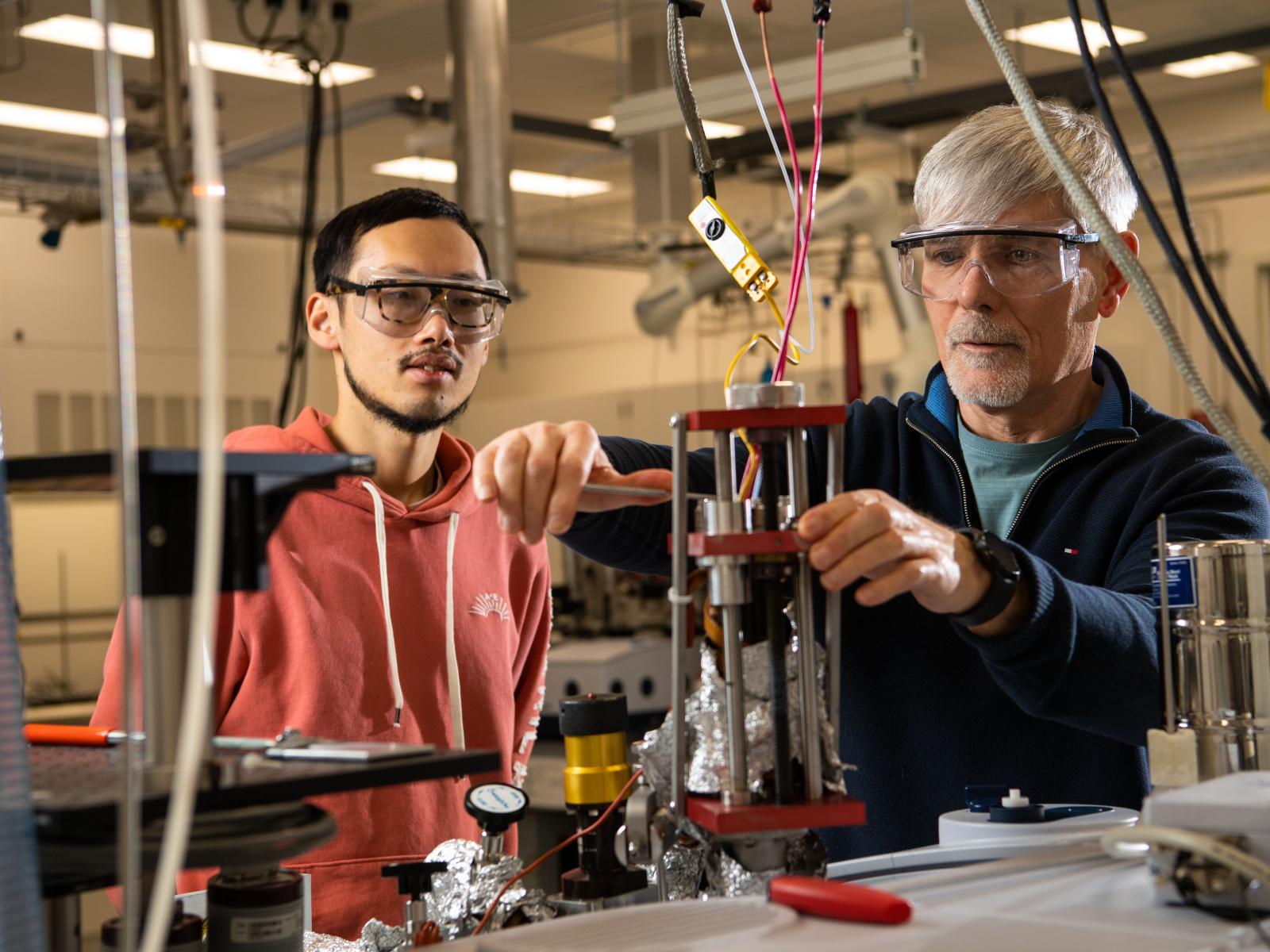The Dynamic Evolution of Single Atoms Determines Catalytic Activity
Reaction conditions affect the structure of single-atom catalysts, controlling overall activity

Carbon monoxide and hydrogen affect a single atom palladium catalyst system differently.
(Photo by Andrea Starr | Pacific Northwest National Laboratory)
Catalysts, molecules or materials that speed up a chemical reaction, are essential to the modern world. They play a role in the creation of plastics, medicine, and fertilizers. However, many of the most effective catalysts rely on rare, limited, or expensive metals. Recently, researchers have begun exploring single-atom catalysts as an option to effectively use scarce metals.
Single-atom catalysts can theoretically maximize metal use. In addition, their clearly defined nature allows researchers to study the mechanism of catalytic reactions more precisely. However, single atom catalysts are very prone to deactivation, where catalysis either stops completely or becomes significantly less efficient.
Researchers at Pacific Northwest National Laboratory (PNNL) studied a single-atom catalyst system, palladium on titanium dioxide, and its performance in the reverse water-gas shift reaction, the conversion of carbon dioxide to carbon monoxide. They explored how different molecules involved in the reaction affected the catalyst and its activity. The team found that high temperature exposure to hydrogen gas caused an enhancement in catalytic activity, while carbon monoxide led to deactivation.
“Single-atom catalysts are ideal for studying the complex active phase dynamics that occur under real catalytic conditions,” said Janos Szanyi, PNNL chemist and corresponding author of the paper. “Through these systems, we can develop a precise understanding of how the environment around the catalytic centers affects catalytic activity.”
Different conditions, different bonds
The different effects of hydrogen and carbon monoxide on the palladium catalyst come from changes to bonding. When exposed to hydrogen at elevated temperatures, the hydrogen largely leaves the palladium as single atoms while reducing the underlying titanium dioxide. This leads to breaking some of the bonds between the palladium and the titanium dioxide, creating highly active palladium. This activation is reversible, though. Exposure of the system to oxygen eliminates the active palladium sites.
Carbon monoxide deactivates the system by converting the single palladium atoms into small metallic palladium particles. The atoms agglomerate into particles, limiting the number of exposed, active palladium sites. While the catalyst still works, it is much less active than if it had not been treated with carbon monoxide.
During the reverse water-gas shift reaction, both carbon monoxide and hydrogen are present. The team found that while both the activation and deactivation pathways occur under reaction conditions, the hydrogen-caused activation is prevalent. The research highlights the highly dynamic changes that can occur in single-atom catalyst systems during catalytic reactions.
“This work clearly demonstrates the importance of studying catalysts under relevant operating conditions,” said Szanyi. “We also show how pretreatments can make a difference to single-atom catalysts, providing some initial guidance for the field.”
This research was funded by the Department of Energy, Office of Science, Basic Energy Sciences. In addition to Szanyi, PNNL authors include Linxiao Chen, Sarah Allec, Manh Thuong Nguyen, Libor Kovarik, and Honghong Shi, as well as former PNNL researchers Vassiliki-Alexandra Glezakou and Roger Rousseau. Adam Hoffman, Jiyun Hong, and Simon Bare from the SLAC National Accelerator Laboratory and Debora Meira from the Canadian Light Source also contributed to this work.
Published: July 13, 2023